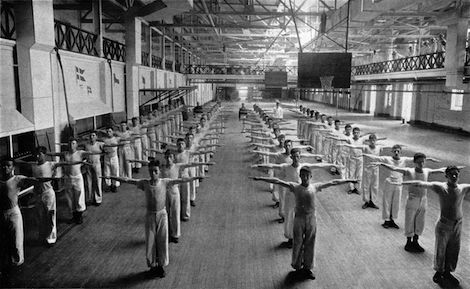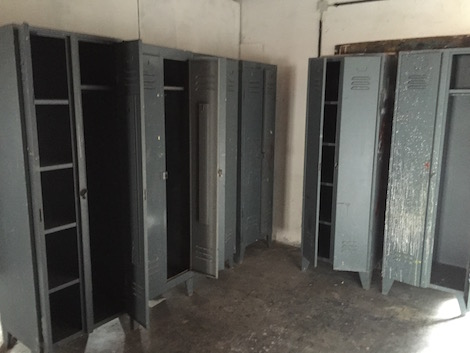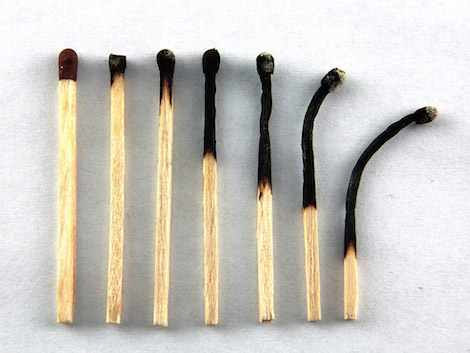| « 19 / 30 This is how the world is (too / not) | 17 / 30 They were like animals » |
18 / 30 Halftime – 10 instructions
Eighteen out of thirty. More than half of my time as your observer in residence is over. I feel that I have more questions than upon my arrival. It all started broadly with: how is art taught today? How can you teach a practice that itself refuses the idea of teaching? Each course at the summer academy finds its very own answers to this. Despite that, certain motifs, certain questions have appeared in all classes. How do you enable somebody to figure out an artistic intention? How do you build an artistic practice? How can you move away from it to arrive at new positions?
As the internet and you love lists, I present to you a preliminary list. This is a list of strategies to learn/teach art. I have observed and wrote on each strategy within one of the last seventeen posts. I found two tasks were present in all courses: firstly, building of an artistic practice. And secondly, developing of an artistic intention.

1. Do the Gymnastics!
The first step is always the hardest. The only way to build an artistic practice is by producing. Producing here means to overcome one’s initial paralysis. In Ben Katchor’s words:
“Because I found the biggest obstacle was that there is so much ego involved in making anything. I said I just make pure exercises like in a gymnasium. It doesn’t matter what the quality is. The main thing is to force yourself to make pictures and to write.” Ben Katchor
2. Get to know your intention and accept it.
“The central thing is an artistic intention. An artistic intention develops from the desire to found something, to create a new aesthetic, because you are not satisfied with the status quo. This is something like the artistic Urtrieb, the one drive behind all artistic intentions. Then it is important to locate and accept your intention. This is the most difficult thing about art. Because accepting your will or your intention has consequences. The freer you become in your way of thinking, the more you get restricted from the outside.” Bernhard Martin

3. Head space! Look out for a void and fill it.
“Instructions like ‘you have to do this’ or ‘this is how it is done’ don’t work. Rather than that learning art has to do with reflection and with a particular headspace. Only if you are confronted with a headspace, with some kind of void you have to fill, you start to ask the right questions.” Bernhard Cella
4. Continue where you are.
“For me that is the most important thing, working photographically means working with layers of the real. It means always working with your social context: where you are in society in relationship to your working. If you are doing street photography or if you are constructing images, what sense are they making? Because otherwise if it is just a snapshot for a photo album, that is fine, but that’s not what I am interested in. It starts with the self. If you don’t know who you are yourself, you are not going to be able to figure out anything else in the world.“ Jayce Salloum

5. Use objects to think.
“It is really important to me that we build dummies. I really try to get them to translate their thinking process into an object. There is no thinking process without an object. I don’t want to look at something before they can show me something concrete. It is really important to collect your own mistakes and errors.” Bernhard Cella
6. Don’t stop interrogating too early.
“And the way to arrive at these things is purely through interrogation. You just keep questioning the thing you are talking about and if you stop questioning, you have an action adventure movie, some stupid plot, where somebody wants to kill somebody. But then if you investigate why do they want to do it and who care why they want to do it, you keep interrogating the premise of what you are writing about, you will get to some interesting revelation. But I think a lot of people don’t have the energy to do this. And you have to throw away a thousand ideas and maybe if you keep thinking about it you will hit one.” Ben Katchor

7. Then break your patterns.
“So, I try to create situations in which my pace doesn’t always overlap with other people's pace. I am creating this gap, so I can maybe hide myself in there. It is something really personal. I just gravitate towards discrepancy, to be not synchronized with the rest of the world.” Tiancheng Cao
“It is all about breaking your own patterns as an artist. To do something that you would not do usually and then see what happens.” Bernhard Martin
8. Don’t change all the parameters at the same time.
Artists feel either really good or really bad about themselves, but there is neither a here or there. It is a process like doing research. There is a method and in certain moments you evaluate while in other moments you make. And then there is a lot of context, your personal and material context. These things are quite easy to quantify. It is not like ‘anything goes’. There are things that you can name. It is a little bit like in science: you can’t change everything at the same time. It is possible to talk about all these things and it is possible to organize even the things you don’t know and even the failures and the downs and the problems and to put them in a place and come back to them later. Varda Caivano

9. Do the striptease. Become another to arrive at your intention.
“We already talked about striptease, but we can also talk about travesty and about role plays. They all share the same notion of a radical change of self, of pushing something over top, but also a form of radical acceptance of the self. And this is also what happens when you are painting. During the act of painting you transform into different kinds of persons. Sometimes you are focused and even anxious, other times you are really relaxed and just let everything happen and give up control.“ Bernhard Martin
“You are only five to ten per cent yourself. And these ten per cent you have explore and discover. You have to locate these ten per cent, this rest of yourself, that is not just the institutions that you are living in. And then you have to exercise them and make them your practice.” Bernhard Martin
10. And all throughout this: be a good chameleon.
“Either you should show your own feelings or you adapt and become invisible. A bad chameleon is one that cannot decide and tries to do both at the same time. Shall I try to show how I feel or shall I adapt?” Maja Lundberg

